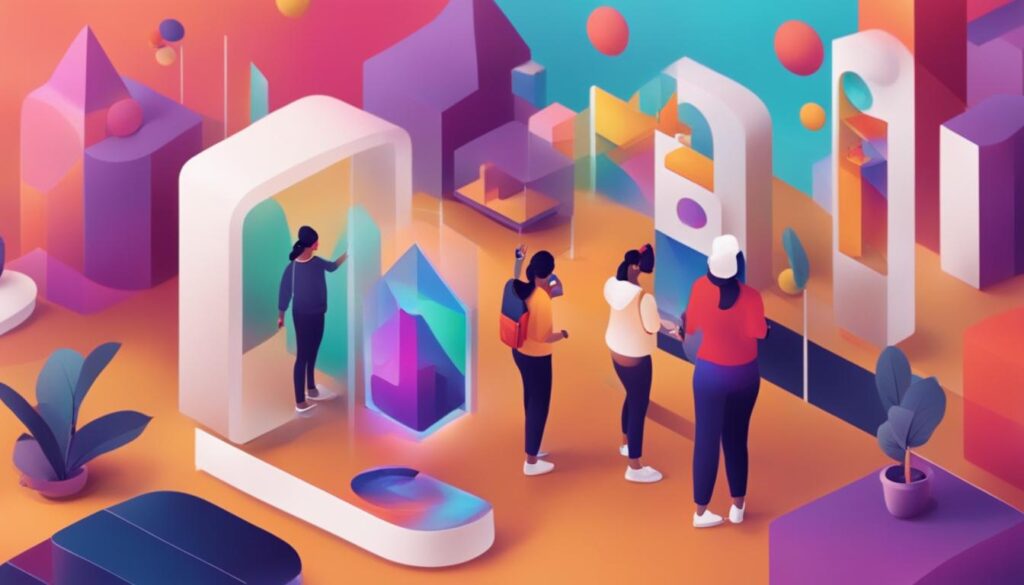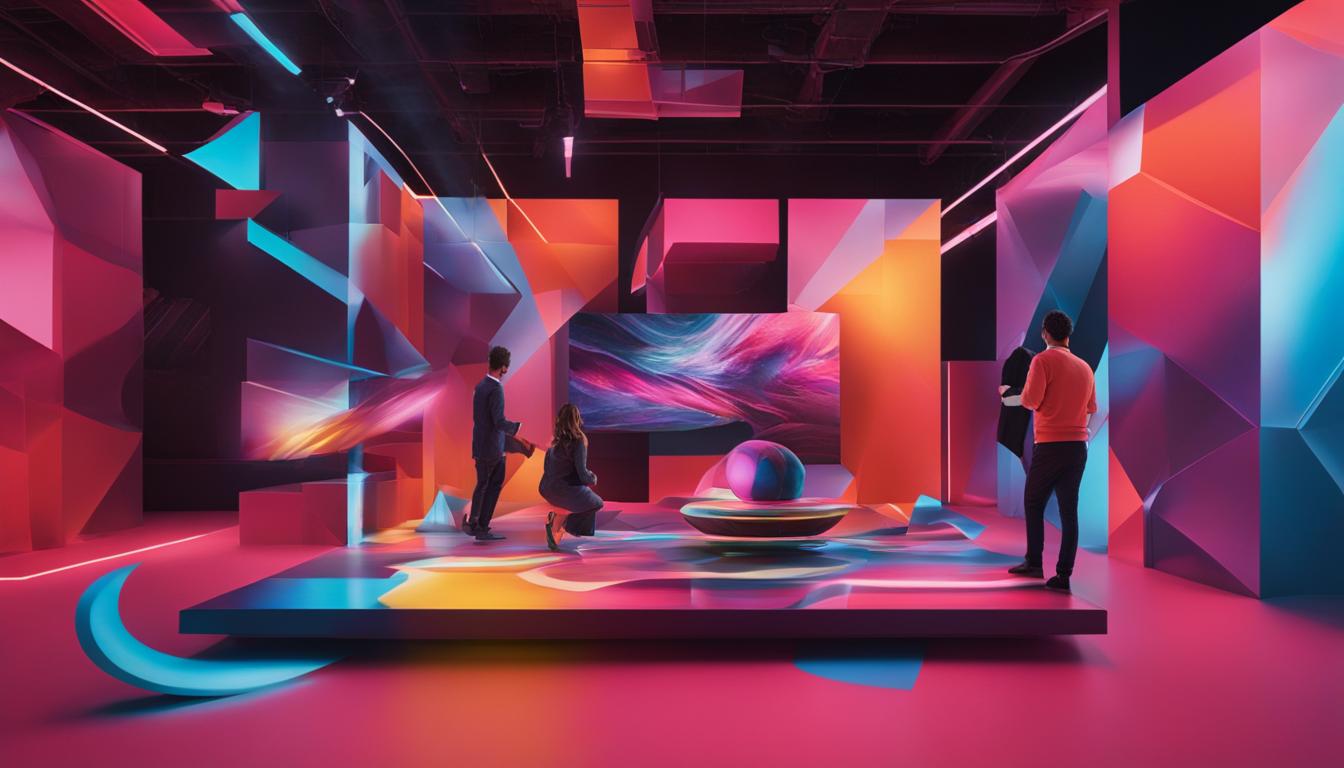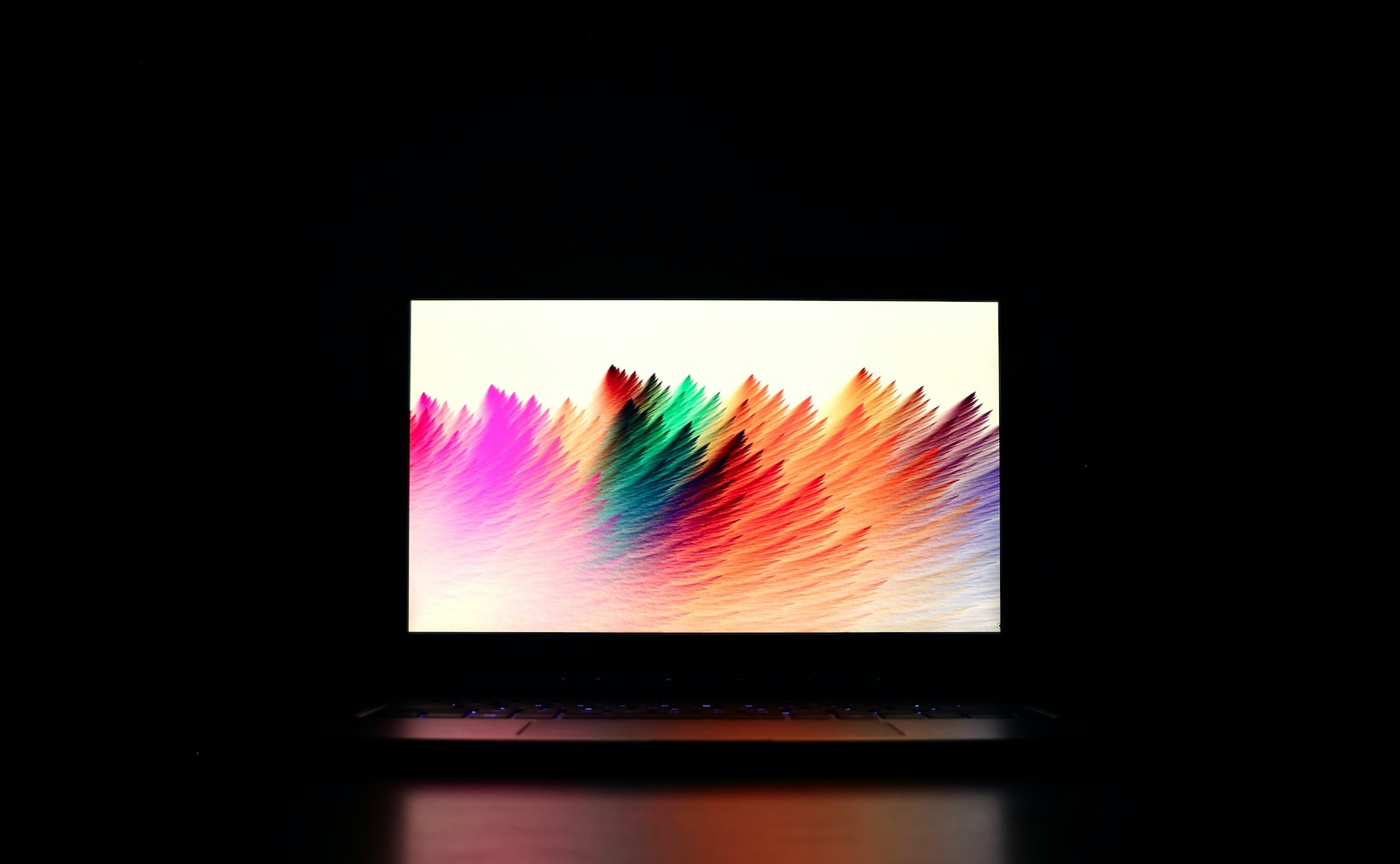Augmented reality (AR) design presents a unique opportunity for creating interactive and immersive experiences. As a subset of augmented reality (AR) technology, AR design goes beyond simply enhancing the user experience. It combines elements of interactive design, virtual reality, and 3D visualization to transform user interactions in a digital environment.
Unlike virtual reality (VR), which creates entirely simulated environments, AR design overlays digital content onto the real world, allowing users to interact with virtual elements in their physical surroundings. This innovation opens up endless possibilities for enhancing user experiences and enabling businesses to leverage digital transformation.
Designing for AR requires a fresh approach, as it presents its own set of challenges and considerations. It is crucial to understand the user experience (UX) principles that make AR design unique and effective. By incorporating best practices and staying abreast of emerging trends, designers can harness the power of augmented reality to create immersive, user-friendly, and impactful designs.
Key Takeaways:
- AR design combines elements of interactive design, virtual reality, and 3D visualization to create immersive experiences.
- Unlike VR, AR design overlays digital content onto the real world, enhancing user interactions in physical surroundings.
- Understanding user experience (UX) principles and incorporating best practices is crucial for designing successful AR experiences.
- AR design has the potential to drive digital transformation and create new opportunities for businesses.
- Staying updated with emerging trends and considering ethical implications is important for achieving success in AR design.
Challenges Faced by Designers in AR Design
Designing for augmented reality (AR) presents unique challenges that require a fresh approach compared to traditional design methods. As AR technology continues to evolve, designers must navigate the complexities of creating immersive and intuitive user experiences while addressing accessibility and technical limitations.
One of the main challenges faced by designers in AR design is ensuring intuitive interaction. Unlike traditional design interfaces, AR utilizes gestures, voice commands, and spatial tracking to enable users to interact with virtual objects in the real world. Designers must carefully consider how users will engage with AR content and create intuitive interaction patterns that are easy to understand and navigate.
Accessibility is another crucial challenge in AR design. Designers must ensure that AR experiences are accessible to all users, including those with disabilities. This involves considering factors such as text readability, color contrast for users with visual impairments, and providing alternative input methods for users who may have difficulty with gesture-based interactions.
Technical challenges also pose obstacles for designers in AR design. AR experiences heavily rely on real-time tracking, rendering, and 3D visualization, which can be demanding on device hardware and software capabilities. Designers must optimize their designs to work seamlessly across a range of devices and operating systems, balancing visual quality with performance to create a smooth and immersive experience.
Table: Challenges Faced by Designers in AR Design
| Challenge | Description |
|---|---|
| Intuitive Interaction | Creating interaction patterns that are easy to understand and navigate in the AR environment. |
| Accessibility | Ensuring that AR experiences are accessible to users with disabilities. |
| Technical Optimization | Optimizing AR designs for device hardware and software capabilities to ensure smooth performance. |
To overcome these challenges, designers should prioritize user research and testing throughout the design process. User feedback and insights can help inform design decisions and identify areas for improvement. Additionally, following best practices in AR design, such as providing clear instructions, minimizing cognitive load, and incorporating user-friendly features, can contribute to creating successful AR experiences.
By understanding and addressing the challenges faced in AR design, designers can create compelling and engaging user experiences that fully leverage the potential of this emerging technology.
Best Practices for User-Friendly and Accessible AR Designs
Creating user-friendly and accessible augmented reality (AR) designs requires careful consideration of user research, testing, and the incorporation of accessibility features. By following best practices, designers can ensure that their AR experiences are intuitive, inclusive, and enjoyable for all users.
One essential practice is conducting thorough user research to understand the needs, preferences, and limitations of the target audience. This research allows designers to gather valuable insights that can inform the design process and help create AR experiences that meet user expectations. User feedback should be actively sought and incorporated throughout the design iterations to ensure that the final product addresses user needs effectively.
Another crucial aspect of user-friendly and accessible AR designs is the inclusion of accessibility features. Designers should consider the needs of different user groups, including those with disabilities, and ensure that the AR experience can be accessed and enjoyed by everyone. This may involve incorporating features such as readable text, sufficient color contrast, audio cues, and multiple input methods to accommodate different abilities and preferences.
Best Practices for User-Friendly and Accessible AR Designs:
- Conduct thorough user research to understand user needs and preferences.
- Incorporate user feedback throughout the design process.
- Consider the needs of different user groups, including those with disabilities.
- Ensure readable text and sufficient color contrast for easy visibility.
- Include audio cues and multiple input methods for enhanced accessibility.
Ultimately, adhering to best practices for user-friendly and accessible AR designs improves the overall user experience and ensures that AR technology is harnessed to its full potential. By considering user needs, incorporating accessibility features, and following a comprehensive research and testing process, designers can create AR experiences that are engaging, immersive, and inclusive for all users.

| Best Practices for User-Friendly and Accessible AR Designs | |
|---|---|
| User Research | Conduct thorough research to understand user needs and preferences. |
| User Feedback | Incorporate user feedback throughout the design process. |
| Accessibility | Consider the needs of different user groups, including those with disabilities. |
| Readable Text | Ensure readable text and sufficient color contrast for easy visibility. |
| Audio Cues | Include audio cues for enhanced accessibility. |
| Multiple Input Methods | Provide multiple input methods to accommodate different abilities and preferences. |
Examples of Successful AR Designs
Augmented Reality (AR) has revolutionized design across various industries, providing immersive experiences and driving business growth. Let’s explore some notable examples of successful AR designs that have made a significant impact on user experiences, sales, and employee performance.
IKEA AR App
One standout example of successful AR design is IKEA’s AR app. The app allows users to virtually visualize furniture in their own homes before making a purchase. By simply pointing their smartphone camera at a space, users can see how different furniture pieces would look and fit in their specific environment. This AR experience eliminates the need for guesswork and gives users confidence in their purchasing decisions. The IKEA AR app has resulted in increased sales and customer satisfaction, empowering users to make well-informed choices.
VR Training Programs
Another successful implementation of AR design is in VR training programs. Walmart, for example, has utilized AR technology to create immersive training experiences for their employees. By simulating real-life scenarios in a virtual environment, employees can develop practical skills and enhance their performance. This AR-based training program has not only reduced training costs but has also resulted in improved employee performance, leading to increased productivity and overall business growth.
Immersive Experiences
The power of AR design lies in its ability to create immersive experiences that engage users on a deeper level. For instance, museums and galleries have integrated AR technology into their exhibits to provide interactive and informative experiences for visitors. By scanning artworks or artifacts using a mobile device, users can access additional visuals, audio guides, historical information, and even 3D visualizations. These augmented experiences enhance visitor engagement, making museum visits more educational and entertaining.
Summary
The examples mentioned above demonstrate the effectiveness of AR design in various domains. Whether it’s enhancing the shopping experience, improving employee training, or creating immersive museum visits, AR has proven to be a valuable tool. Successful AR designs have not only increased sales and productivity but have also provided users with unique and engaging experiences. As technology continues to advance, we can expect to see even more innovative and impactful AR designs in the future.
Conclusion
Augmented reality (AR) design presents unique opportunities and challenges for designers. As AR technology continues to evolve, the future of AR design holds immense potential for innovation and growth. Designers need to adapt and embrace emerging trends, while also considering the implications of their work.
The implications for designers in the future of AR design are vast. The integration of artificial intelligence (AI) and machine learning (ML) can enhance AR experiences by personalizing content and improving user interactions. Advancements in hardware and software will also enable more seamless and immersive AR experiences.
However, as AR design advances, ethical considerations must be a priority. Designers must ensure user privacy and responsible use of AR technology. By following best practices, designers can create user-friendly and accessible AR designs that prioritize user needs and maintain the highest ethical standards.
In conclusion, AR design offers exciting possibilities for businesses and designers alike. By leveraging the benefits of AR technology, businesses can drive growth, enhance user experiences, and gain a competitive edge. Designers must stay updated with the latest trends, embrace best practices, and adhere to ethical principles to thrive in the dynamic world of AR design.
FAQ
What is augmented reality (AR) design?
Augmented reality (AR) design involves creating interactive and immersive experiences by overlaying digital content onto the real world.
How does AR design differ from virtual reality (VR) design?
AR design focuses on enhancing the real world with digital elements, while VR design creates entirely virtual environments that users can explore.
What are the challenges faced by designers in AR design?
Designing for AR presents challenges such as creating immersive experiences, ensuring accessibility, and overcoming technical limitations.
How can designers overcome these challenges?
Designers can overcome these challenges by conducting user research, gathering feedback, and following best practices like incorporating accessibility features and optimizing technical aspects.
What are the best practices for creating user-friendly and accessible AR designs?
Best practices for AR design include conducting user research, gathering feedback, considering different user needs, incorporating accessibility features, and following guidelines for readable text, color contrast, and input methods.
Can you provide examples of successful AR designs?
Examples of successful AR designs include IKEA’s AR app that allows users to visualize furniture in their homes, leading to increased sales, and Walmart’s VR training program that has improved employee performance and reduced training costs.
What does the future of AR design look like?
The future of AR design may involve further integration with AI and ML technologies, as well as advancements in hardware and software. Designers and businesses can leverage AR design to enhance user experiences, drive business growth, and gain a competitive advantage.
What ethical considerations are associated with AR design?
Ethical considerations in AR design include ensuring user privacy and responsible use of AR technology. Following best practices and staying updated with emerging trends are crucial to address these ethical considerations.
 Skip to main content
Skip to main content


